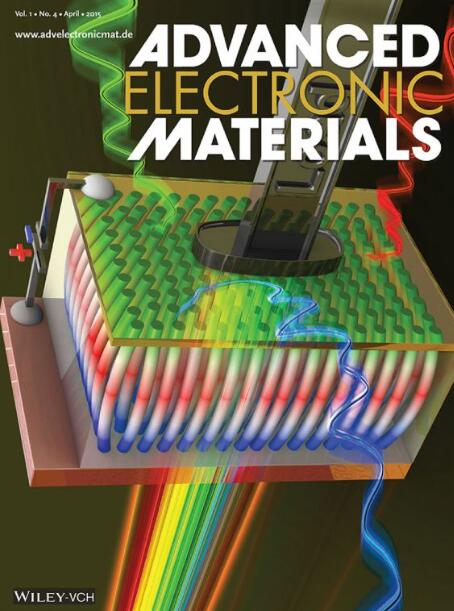Enhancing Thermoelectric Performance of Cd₃P₂ by Alloying with Dirac Material Cd₃As₂
IF 5.3
2区 材料科学
Q2 MATERIALS SCIENCE, MULTIDISCIPLINARY
引用次数: 0
Abstract
This study systematically explores the electrical and thermal properties of Cd₃P₂ by alloying it with the Dirac material Cd₃As₂, employing a combined experimental and theoretical approach. The findings demonstrate three distinct characteristics of this solid solution system: i) The continuous solid solution formation between Cd₃P₂ and Cd₃As₂ enables the tuning of the band structure. ii) Increasing As content leads to a reduction in effective mass, decreased deformation potential, and a substantial enhancement in carrier mobility. iii) The system exhibits phosphorus vacancy generation, which creates donor levels within the band gap and consequently impacts thermoelectric performance. Specifically, an ultrahigh mobility exceeding 7 × 103 cm2 V−1 s−1 is achieved in Cd₃PAs. This substantial improvement in mobility across the entire temperature range resulted in a twofold increase in the power factor and a marked enhancement in thermoelectric performance, particularly in the low-temperature region. These results provide foundational insights into the thermoelectric behavior governed by the interplay between the semiconductor Cd₃P₂ and the Dirac material Cd₃As₂, establishing a framework for further research and performance optimization of this solid solution system.

Dirac材料Cd₃As₂合金化提高Cd₃P₂热电性能
该研究采用实验和理论相结合的方法,通过将Cd₃P₂与Dirac材料Cd₃As₂合金化,系统地探索了Cd₃P₂的电学和热学性质。研究结果证明了该固溶体系统的三个不同特征:i) Cd₃P₂和Cd₃As₂之间连续的固溶体形成使得能带结构可以调谐。ii)增加As含量导致有效质量降低,变形势降低,载流子迁移率大幅提高。iii)该系统显示出磷空位生成,这在带隙内产生供体水平,从而影响热电性能。具体来说,在Cd₃PAs中实现了超过7 × 103 cm2 V−1 s−1的超高迁移率。在整个温度范围内迁移率的大幅提高导致功率因数增加了两倍,热电性能显着提高,特别是在低温区域。这些结果为半导体Cd₃P₂和Dirac材料Cd₃As₂之间的相互作用所支配的热电行为提供了基础的见解,为进一步研究和优化该固溶体体系建立了框架。
本文章由计算机程序翻译,如有差异,请以英文原文为准。
求助全文
约1分钟内获得全文
求助全文
来源期刊

Advanced Electronic Materials
NANOSCIENCE & NANOTECHNOLOGYMATERIALS SCIE-MATERIALS SCIENCE, MULTIDISCIPLINARY
CiteScore
11.00
自引率
3.20%
发文量
433
期刊介绍:
Advanced Electronic Materials is an interdisciplinary forum for peer-reviewed, high-quality, high-impact research in the fields of materials science, physics, and engineering of electronic and magnetic materials. It includes research on physics and physical properties of electronic and magnetic materials, spintronics, electronics, device physics and engineering, micro- and nano-electromechanical systems, and organic electronics, in addition to fundamental research.
 求助内容:
求助内容: 应助结果提醒方式:
应助结果提醒方式:


